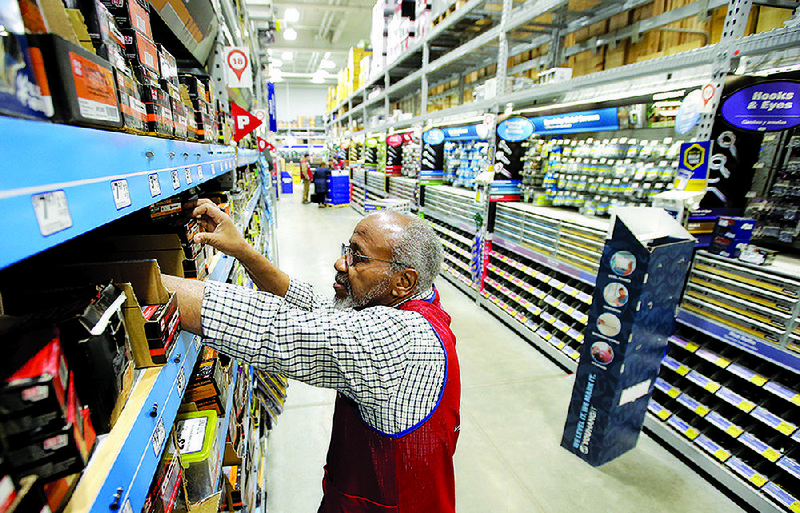NEW YORK -- The divide between retail winners and losers is widening.
That became even more evident last week with the latest batch of earnings reports: Big-box stores and off-price retailers have been responding faster to shoppers' increasing shift online with expanded deliveries and better merchandise. But many mall-linked clothing chains and department stores continue to suffer weak sales as they struggle to attract shoppers.
"There is an increasing polarization in retail," said Neil Saunders, managing director at GlobalData Retail. "It's a vicious cycle, and it's difficult to pull out of the tailspin."
In fact, for the first two fiscal quarters of this year, earnings at off-mall retailers rose 3%, compared with a drop of 29% for mall retailers, according to Retail Metrics, a retail research firm, which analyzed results at 105 retailers.
Last week, Target raised its annual earnings guidance after reporting strong sales and traffic. It was helped by its same-day delivery services, as well as a strong lineup of homegrown brands. Lowe's, the nation's second-largest home improvement retailer behind Home Depot, blew past Wall Street's second-quarter earnings expectations, buoyed by strong demand for spring goods and sales to contractors.
Both companies' stocks soared.
Earlier, Home Depot handily beat second-quarter profit expectations, while Walmart last week raised its outlook for the year and off-price chains like T.J. Maxx also are faring well, resonating with shoppers who love to treasure hunt.
But clothing chains and department stores haven't differentiated their merchandise enough, and now discounters are further squeezing them by pushing into more affordable trendy fashions, retail industry analysts say.
Earlier this month, Macy's lowered its annual earnings guidance after its earnings suffered in the second quarter as it slashed prices on unsold merchandise. J.C. Penney's is in the worst shape. It posted another quarter of sales declines. Kohl's shares, meanwhile, fell last week after posting a sales decline though business improved later in the quarter.
Saunders and other analysts say that they started to see a clear divide between retail's winners and losers four or five years ago, but that gap has gotten more pronounced because of a combination of factors. For several years, a strong economy provided tailwinds to retailers of all stripes, and last year's tax cuts gave merchants a nice sugar high. But as the economy starts developing some cracks, vulnerable retailers will become even more exposed.
Analysts also say that the shift to online shopping keeps accelerating, giving a big advantage to retailers like Target and Walmart who've been able to invest billions of dollars in online deliveries and in their stores. Some mall retailers are now looking at other ways to attract shoppers, including subscription rental services and carving out areas to sell secondhand clothes.
But for some, it may be a case of too little, too late.
"In a world where consumers have more choices than ever, inferior brick-and-mortar experiences will go away," said John Mulligan, Target's chief operating officer.
Target's comparable-store sales, which include online sales, rose 3.4% as customer traffic jumped 2.4%. Online sales soared 34%. The Minneapolis company raised profit expectations for the year, sending its shares up 19%. Shares in Lowe's Co., which is based in Mooresville, N.C., were up more than 10%.
Still, it is an uncertain time for even surging retailers like Target.
President Donald Trump's administration has imposed a 25% tariff on $250 billion in Chinese imports. A pending 10% tariff on another $300 billion in goods would hit everything from toys to clothing and shoes that China ships to the United States.
And it appears the retailers that have been winning all along will be the ones to better navigate the tariff storms.
Target CEO Brian Cornell told analysts that while the trade wars present an additional layer of uncertainty and complexity, he pointed to the company's diverse assortment, deep expertise in global sourcing and sophisticated set of manufacturing partners around the world.
Meanwhile, Macy's said that its shoppers don't have an appetite for higher prices in a ballooning U.S. trade war with China. The department store was forced to raise prices on some luggage, housewares and furniture to offset the costs of a 25% tariff implemented in May. Macy's vowed not to increase prices as a result of the 10% tariff, but CEO Jeff Gennette said the company will be speaking with vendors about ways to offset rising costs if the trade war escalates.
SundayMonday Business on 08/25/2019

